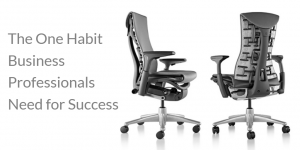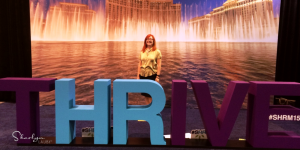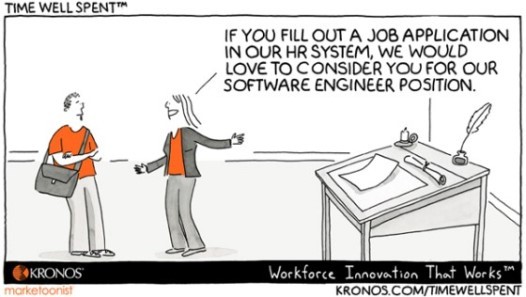Sharlyn J. Lauby's Blog, page 159
April 14, 2016
Standup Meetings Help Build Transparency
There are only three types of meetings: informational meetings, problem solving meetings, and feedback meetings. Within each of these types of meetings are narrower categories; for example, a brainstorming meeting can be considered a feedback meeting because the purpose is to get feedback (in the form of ideas) about a particular issue.
One of the most effective types of informational meetings is the standup meeting. The reason it’s called a standup is because the meeting is so short that most of the time people can stand for the meeting (unless of course they are unable.) The purpose of the standup is to conduct an incredibly brief meeting dispensing only the absolutely essential information.
Let’s backtrack for a second. I believe standups came into being because sit down meetings take too long. I’m not opposed to long meetings, as long as they’re needed. However, I must admit it’s rare to have a 10-15 minute sit down meeting.
It’s sad to say but some people feel that, if they call a meeting, they must talk for a certain length of time (like the quality of the meeting is directly proportional to the length of the meeting.) So in some organizations, sitting in a conference room means the meeting will take a minimum of 30 minutes. In others, it might mean a one-hour minimum.
I think this is something that we have been conditioned to accept and expect over the years. Standup meetings may help change that:
Standups are regularly scheduled quick meetings. Usually held in an open space, standups are designed to quickly share information. And I mean quickly. This meeting shouldn’t last over 10 minutes. Fifteen tops.
Standups are designed to pass along work information. In my experience, standups are conducted at the beginning of shifts. The purpose is to give the team information they needed for the day. The departing shift would debrief the arriving shift. If something happened with a customer and the arriving shift needed to follow-up, this was where the information was passed along. They aren’t designed for long philosophical conversations. They aren’t for complex issues. They are a quick, “Here’s what you need to know. Have a great day.”
Standups are best when the team doesn’t become complacent. Even short shift briefings can become a bit routine. One thing I’ve seen done in my past experience to keep people on their toes (no pun intended) was schedule the briefing at an odd time. We found briefings at the quarter hour (i.e. :00, :15, :30, :45) automatically took longer because people were late. So we conducted standups at :50 or :20.
Standups can bring the team together. Senior management team can use standup meetings to occasionally recognize and reward employees during standups. Nothing elaborate but, looking back on my experience with standups, it was nice to hear, “Before we end, let’s give a shout out to Bill for passing his certification exam.” Or “I want to thank everyone for working so hard on this project. I’ve got Starbucks gift cards for everyone. Have a coffee on me today.”
Standup meetings can educate the business. The meeting allows everyone to hear what’s going on in the organization. Standups shouldn’t be people-specific or department-specific. If you’re working, you’re welcome to attend. Depending upon the operation, maybe someone does need to stay and take care of customers, but one representative can attend and bring back information. In fact, employees can take turns attending the standup, so they are able to build relationships around the organization.
A few years ago, transparency was a much talked about concept. Then it fell into the corporate buzzword category and faded a bit. I’m hearing people talk about transparency again. Maybe we’ve realized that the concept of making sure employees know what is going on in the business is important – even if the term for it is considered a buzzword. Standup meetings are a great way to share what’s happening in the company and build a team.
Image taken by Sharlyn Lauby at the Gainesville 34th Street Graffiti Wall
The post Standup Meetings Help Build Transparency appeared first on hr bartender.






April 12, 2016
How To Deliver Bad News At Work – Ask #HR Bartender
Today’s reader note is one we can all relate to:
I’m a new manager. There have been times when I have to conduct a difficult conversation. I don’t have anyone to guide me on how it should be done. Do you have any advice in this area?
Whether you’re a new manager or seasoned pro, having difficult conversations is tough. In fact, delivering bad news in general is hard whether you’re a manager or an employee. In this situation, I’m not sure what the difficult conversation is about. It could be that an employee is going to have their hours cut or maybe it’s to tell an employee they need to improve their performance.
Regardless of the topic, there are a few things to remember when delivering bad news:
Know your audience. Put yourself in the shoes of the person you’re having the conversation with. Empathize with their situation. Let’s say you have to tell someone they aren’t getting the promotion they were hoping for. Tell the employee that you understand what it’s like to be disappointed.
Be direct. It’s very tempting to sandwich the bad news in between small talk or sugar coating. This sends a mixed message. An example would be if you have to tell your team that the department budget is being cut. That’s a serious conversation and you need the team to help cut expenses. If you water down the message, it possible the team will not understand the goal.
Find your words. Once you know that you have to convey a difficult message, start thinking about how you will say those words. Practice it out loud. Sometimes as managers, we are asked to communicate bad news that was decided by senior management. The last thing we want to do is throw anyone under the bus, so find the best way to deliver the message using your own voice.
Look for resources to help you. Over the years, I’ve found that books, blogs, presentations, etc. are great ways to hear new ways for communicating. I love those “Perfect Phrases” books for that reason. They help me find a new way to say something. I can use their suggestions to find my own voice (see above.)
Each of us has to deliver unpleasant news every once in a while. If we put ourselves in the receiver’s shoes and deliver a straightforward message using our own voice, people might not like what’s happening, but they will come to respect us for communicating bad news in a human way.
The post How To Deliver Bad News At Work – Ask #HR Bartender appeared first on hr bartender.






April 10, 2016
The One Habit Business Professionals Need for Success
I’m not going to keep you in suspense. It’s good posture.
Yes, good posture.
You would be amazed at what proper posture does for your health, well-being and overall success. And we know that there’s a direct correlation between the way we feel and our work and performance.
I’ve mentioned before that several years ago, I broke my back in an auto accident. Since then, I’m very conscious of my back and try to have good posture. Sitting up straight just feels good. Even on long trips. I intentionally sit in airplane seats that don’t recline because reclining the seat doesn’t feel relaxing.
So, yes, I’m a posture freak.
But even I must admit that I was surprised at my poor posture habits prior to getting a Herman Miller Embody chair. If you’re not familiar with the company, Herman Miller is a furniture company known for its contemporary and ergonomic designs. Their Aeron Chair is an icon in the office furniture world. They specialize in helping companies design beautiful and healthy workspaces for employee success.
Since I spend a lot of time sitting, the wonderful folks at Herman Miller sent me an Embody Chair. I was thrilled! With all of the conversation today about “sitting is the new smoking,” I wanted to see if a chair really makes a difference. Especially for someone like me, who is a self-proclaimed posture enthusiast.
Bottom-line? Yes, it does.
The Embody Chair is not only stylish, it helps me maintain good posture in a comfortable way. The chair is very customizable. You set the seat height, arm height, and back to fit you. It comes with instructions on the best way to set the chair for proper posture. You don’t have to guess what proper posture feels like. Because trust me, proper posture takes some getting used to!
Speaking of which, if you’re wondering how you can check your posture, I asked Rebecca Greier Horton, human factors and ergonomics consultant at Herman Miller for a primer.
 [Horton] If you are able to stand for a period of time without pain, you more than likely have good posture. Poor posture causes pain: stress on joints, poor circulation (numbness), some of the body’s muscles tighten and shorten while others lengthen and become weak. If you experience pain, chances are something is out of alignment. Here’s a physical description of good standing and seated posture:
[Horton] If you are able to stand for a period of time without pain, you more than likely have good posture. Poor posture causes pain: stress on joints, poor circulation (numbness), some of the body’s muscles tighten and shorten while others lengthen and become weak. If you experience pain, chances are something is out of alignment. Here’s a physical description of good standing and seated posture:
Good Standing Posture
Both feet flat on the ground with knees unlocked.
From a side view the ears, middle of the shoulder, middle of pelvis, knees, and ankles should align. Think in terms of a plumb line running down the side of the body.
Joints are relaxed but core muscles are engaged to support the natural S curve of the spine. Avoid the “Mommy stance” (i.e., toddler perched on one hip and all of the body weight supported on one leg.)
Proper seated posture is highly influenced by what we are sitting upon: Park bench? Boulder? Beanbag? Office chair? Sitting posture is similar to a building foundation. If you are able to stabilize the foundation, the rest of the spine stacks atop the foundation (i.e., no leaning tower of Pisa.)
Proper Seated Posture
To position the body into a good seated posture, feet are flat on the floor.
The knees are bent at a 90-degree angle with no impingement on the nerve running behind the knee.
The sacrum is firmly supported so the natural S curve of the spine is established.
The scapulae are stabilized against a supportive back and the head is perched atop the shoulders (not craning forward or tilting/turning to one side.)
Don’t forget your shoulders! For many of us who drive, work on a computer, and/or are just habitual slouchers, our shoulders tend to stay rotated forward. This is how you can keep your shoulders aligned.
Visualize the anatomy of your shoulders and how there are three distinct deltoid muscles.
Think of holding your shoulders in a position keeping those three muscles balanced.
Rebecca also shared with me that proper posture results in more than just a straight back. “Proper posture results in pain free movement. Degeneration of joints and our bones is inevitable but by establishing good posture (and it’s almost never too late) one can mitigate pain. There are entire studies discussing the effects of pain on both physical and physiological well-being.”
The key to “good posture” is movement, so – Sit. Stand. Repeat!
Click To Tweet
I know that part of the fun in today’s workspaces is taking the traditional desk out of the picture. And there’s nothing wrong with that. But we can’t sacrifice our health in the process. Just because we can work with a laptop in our bed, doesn’t mean we should. We can have cool and healthy offices.
If we take care of our bodies, it shows in our work. When we feel good, we work smarter and perform better. Proper posture helps us feel our best so we can do our best work.
The post The One Habit Business Professionals Need for Success appeared first on hr bartender.






April 8, 2016
Include Recruitment Marketing In Your Hiring Strategy [infographic] – Friday Distraction
Before I made the decision to become a consultant, I interviewed consultants. I asked their advice and they were very gracious to share best practices and lessons learned. One person told me – “Never stop marketing.” They told me a story about landing a huge client which was very lucrative and thinking they could stop marketing (because they had this great client.) Then the great client cancelled the contract. And they were stuck.
The same philosophy applies to recruiting. Just because you don’t have a job opening doesn’t mean you should stop recruiting. Organizations need to use recruitment marketing tools to proactively attract and engage passive candidates and build “pools” of talent for future hiring needs.
Our friends at iCIMS recently released a research study, “Recruitment Marketing: Fad or Future?” which shares insights on the relevance of recruitment marketing, and why employers should consider it as part of their hiring strategy.
iCIMS analyzed data from more than 760 human resources professionals and candidates. The research was conducted to shed light on the rise and impact of the consumer candidate and the emerging trends within recruitment marketing.
I must admit some information in the report was not a surprise. For example, 90 percent of HR professionals agree that having a strong employment brand is more important today than it was five years ago. But what did surprise me were the steps that HR pros are taking to strengthen their brand using recruitment marketing:
86 percent said recruitment marketing automation is an effective strategy to identify, attract, engage and nurture candidates.
76 percent have seen a strong return-on-investment from the use of recruitment marketing automation tools.
48 percent currently have or plan to hire someone in 2016 who is responsible for recruitment marketing.
Human resources departments need to utilize recruitment marketing strategies to keep their talent pipelines filled with the best talent. Technology can help. Just like in every business, marketing gets you the best customers…it will get you the best candidates too.
The post Include Recruitment Marketing In Your Hiring Strategy [infographic] – Friday Distraction appeared first on hr bartender.






April 7, 2016
You Need to Take Leadership Development Beyond the Classroom
Leadership skills are not developed in classrooms.
Yes, leadership models and theories can be learned in classrooms. Activities and exercises can be conducted to reinforce the learning and practice. But becoming a leader doesn’t happen in the classroom. It’s about what you do outside of the classroom.
Years ago, I participated in Leadership Broward, an educational program designed to prepare business leaders for roles as community leaders. After being a participant, I came back for a few sessions to share the principles of servant leadership with subsequent classes. It made me realize that I wasn’t teaching these business professionals how to be a leader. I was sharing with them the concept of servant leadership. I was facilitating a conversation. And it was up to them to use the information in their community projects as part of developing their leadership skills.
I’m starting to see more organizations take this approach. They’re building in a service component to their leadership development programs. It’s great for participants and it can support the organization’s corporate social responsibility (CSR) efforts. A few months back I read about Dow Chemical having a service component to their global leadership development program. Participants spend one week in places such as Ghana and Ethiopia addressing community needs.
But building a service component into your leadership development program doesn’t have to involve going to another country. I’ve always worked for companies that allowed me to volunteer my time. Whether it was being president of HR Florida or an usher at Cincinnati’s ATP World Tour, I learned something about being a leader and part of a team. I’ve even worked for companies that expected me to give back to the community and industry. It was viewed as giving back to our supporters (in addition to my own professional development.)
One company that I know gets this concept is Ultimate Software. They did something very cool at this year’s Connections user conference. They set aside a few hours on the program agenda for a community service project. Conference participants were able to stop by and assemble over 5,000 hygiene kits for Clean the World, an Orlando-based organization that helps provide soap and cleanliness products to those in need. Frankly, I’d love to see more conferences use their resources this way. It benefits the community and it helps build leadership skills.
Take leadership development beyond the classroom.
Click To Tweet
Don’t get me wrong. Providing leadership development education is important and necessary. But for leadership skills to stick, it has to go beyond the classroom.
Image taken by Sharlyn Lauby while strolling Fort Lauderdale Beach
The post You Need to Take Leadership Development Beyond the Classroom appeared first on hr bartender.






April 5, 2016
Give #HR the Tools to Become Strategic and Successful
There’s regular conversation about the need for human resources to be more strategic. And, the discussion usually mentions that HR needs to learn the business and numbers. Totally true. Successful HR pros understand their industry, company, as well as their role.
However, I came across a report recently that might offer some insight why this is such a tough transition for HR. Harvard Business review published a report called “The Changing Role of the CHRO.” Frankly, while it speaks in terms of the Chief Human Resources Officer (CHRO), I can see it applying to other human resources roles. The summary of findings was particularly interesting.
No surprise. Seventy-five percent (75%) of companies surveyed said the number one challenge for CHROs is attracting, developing and retaining talent. This hasn’t changed in over a decade. Survey after survey reaffirm that talent is a key differentiator in business.
What did surprise me was that companies are equally split about the role of human resources. Some feel HR should focus on aligning business and talent strategy. Others feel that HR needs to maintain compliance, compensation and benefits, etc. What struck me about this finding is, if companies are struggling to define HR’s role…then you can imagine how HR feels. And the challenges of trying to be all things to all people.
That being said, another non-surprise to me was that analytical skills are the biggest challenge for HR. Regardless of whether senior management wants HR to maintain compliance or align strategy, human resources professionals need to possess strong analytical skills.
But, here’s the clincher. Thirty-four percent (34%) of companies said they’ve done nothing to help HR get any better at analytical skills. This includes not making technology investments to help HR gather the data to make the necessary analytical decisions.
This is the equivalent of telling a new hire employee that you want them to do a task and not giving them the training, coaching, etc. so they can be successful. Then telling them during their annual performance review that they’re not meeting the company standard. We don’t do that to employees, so why do it to HR?!
Organizations that want human resources to be more strategic, need to 1) set the expectation with HR, 2) give them the training and technology tools necessary, and finally 3) hold them accountable. Based upon the statistic that 75 percent of organizations feel talent is the number one priority, I’d like to think that companies really want HR to deliver on this. And in a big way.
When it comes to talent, I’ve never had a CEO tell me, “Well, just get us a couple of average employees. Don’t work too hard on it.” Organizations want the best talent. This means HR needs to be strategic and analytical in their approach. It makes no sense for companies to ask HR to deliver then tie their hands. Give the HR function the support, resources and tools they need to be successful. The business – and bottom line – will benefit from it.
Image courtesy of Sharlyn Lauby taken at the SHRM Annual Conference
The post Give #HR the Tools to Become Strategic and Successful appeared first on hr bartender.






April 3, 2016
What Work Should Managers Delegate
I ran across this blog post on the Management Skills Blog answering the question “What to Delegate, What to Self-Perform?” It’s a good post but I found myself wanting more detail. Delegation is an important activity. Managers who want to be successful, must learn how to delegate effectively.
Managers will never be able to move up within the organization, take an uninterrupted vacation, participate in a special project, or enjoy a day of training if they can’t delegate. Every time they leave their office, they will be pestered, emailed and voice mailed all day long. Don’t get me wrong, sometimes as managers, we have to be consulted about emergencies and out of the ordinary situations. But our teams should be able to handle a few days without us. In fact, if a manager is on vacation and an emergency happens, their employees should know who is around that they can consult – instead of contacting someone on vacation.
Delegation is such a critical skill, I decided to spend some time really thinking about the conditions that need to be present for a manager to delegate effectively. I realized there are two key situations when you should delegate:
When the working relationship is strong and trusting. Managers should have confidence that their employees can do the task. They need to tell employees that they are confident the employee will do a great job. It’s okay for there to be a little apprehension. It’s the first time a manager is delegating the task. It’s the first time the employee is doing the task on their own. But delegation is moving in the right direction when it’s perceived in a positive way and as a growth opportunity (versus the employee is being set up to fail.)
When the employee is ready to do the task. Managers need a working knowledge of the skills and abilities necessary to complete the work. An example would be if a manager wants to assign me to do a report. The report is completed in Microsoft Excel. Obviously, I need to know Excel in order to do the report. Managers will want to make sure that the employee is capable of doing all the individual parts before delegating. And if there’s some skill the employee is missing, then make sure they get the training necessary so they can feel comfortable completing the work.
So the next time you’re wondering, “Should I delegate that or do it myself?” Answer these three questions:
Am I confident that the employee can do the work? We need to trust that our employees have pride in themselves and their work. They will work hard to accomplish the task.
Is the employee capable of doing the work? They might not be perfect the first time they complete the assignment. But chances are, we weren’t either. Keep in mind, it’s also possible they will do a great job.
Lastly, does the employee want to do the work? Employees need to know how this new task fits into their existing workload. They want to understand how the task benefits them and the organization.
What work should managers delegate?
Click To Tweet
If by chance, you ask yourself these questions and the answer is “no,” that’s not the end of the matter. While you might choose not to delegate the task, as the manager, you need to ask yourself “Why?” and “What do I need to do in order to delegate this task?” Not being able to delegate something isn’t as much a reflection on the employee as it is on the manager and their ability to develop their people.
Image taken by Sharlyn Lauby after some awesome meatballs at Fork & Balls in South Florida
The post What Work Should Managers Delegate appeared first on hr bartender.






April 1, 2016
Your Hiring Process Must Fit the Job – Friday Distraction
I know I spend a lot of time being a “technology evangelist.” There’s a reason for that. I believe technology can bring real value to business.
I also understand that the amount and type of technology a business requires is dependent upon the business. Larger organizations, in order to scale, might have more technology than smaller companies. But that doesn’t mean smaller organizations have an excuse for not adopting technology. There are many technology solutions specially designed for the small and medium business market.
Today’s Time Well Spent from our friends at Kronos reminded me that the same philosophy applies to recruiting technology. If a company is looking for the best technology talent, then what kind of message does it send if you have a manual hiring process?
Candidates today are well aware of technology. They can play games, make doctor appointments, book their vacation, and deposit a check using their mobile devices. It’s not unreasonable to think that, if I can order a pizza using an emoji, I can also quickly and easily apply for a job.
Nearly two-thirds of Americans are smartphone owners according to research from Pew Research Center. What’s interesting about that number is that 10 percent of smartphone owners do not have any other form of internet access at home. And an additional 15 percent have a limited number of ways to get on the internet period (besides their cell phone.) This means organizations need to think about how they are going to hire people whose primary means of connectivity is their smartphone.
Organizations that want employees to work on (and enjoy working on) computers and technology solutions should think about aligning their hiring process with the rest of their business.
The post Your Hiring Process Must Fit the Job – Friday Distraction appeared first on hr bartender.






March 31, 2016
Turn Your Office Breaks Into Recharge Time
One of the things I love about working from home is lunch. I get to step away from my desk, even for a few moments and relax. I also like making salads for lunch and it’s so much easier to do when I’m at home. I actually feel like I’m splurging.
When I go to a client site, I’ll often bring my lunch because it’s better for me than fast food. But do I pack a salad? Rarely. But during this year’s HR West conference I got the best piece of swag that might just change that.
It’s a salad container. Isn’t that cool? There’s a small cup in the top for salad dressing and a fork that snaps to the side. Inside the container were a couple of bands and a running pack for your phone and earbuds. Best, of all, it’s the perfect size for my tote bag.
The company that gave it to me is Lahlouh. They help companies deliver their marketing messages to customers. And they were at HR West because they realize that messaging extends to employees.
I couldn’t resist sharing this with you because it might be a great logo item for employees. Or a nice logo product for volunteers. Trust me, I know how hard it can be to find unique promotional items. I also thought that, instead of serving the traditional box lunch at a company event, it could work as an option to serve lunch in a logo salad cup. For example, this Asian Quinoa Salad or Taco Salad would be perfect.
Then once you get the salad cup home, find some great recipes for yourself. Right after getting my cup, The Muse ran this post on “52 Creative (and Easy!) Lunch Ideas That’ll Make Your Co-workers Jealous.” The lentil and goat cheese salad looks yummy!
 This post might seem frivolous to some. Lunch is an important part of our workday. It’s a time to step away from our desks and recharge a little. We need to take breaks during the workday. Part of that recharge is eating properly. I’m not anti-eating out, but bringing some tasty healthy eats from home can be wonderful for ourselves and our wallets. It can make us feel energized and ready to take on the afternoon.
This post might seem frivolous to some. Lunch is an important part of our workday. It’s a time to step away from our desks and recharge a little. We need to take breaks during the workday. Part of that recharge is eating properly. I’m not anti-eating out, but bringing some tasty healthy eats from home can be wonderful for ourselves and our wallets. It can make us feel energized and ready to take on the afternoon.
I’m really looking forward to packing my next lunch. That’s what it’s about. Finding that container or recipe that makes us want to spend a few moments in the kitchen creating something fabulous. Then looking forward to actually taking those lunch and office breaks so we can recharge and be more productive in the long-run.
The post Turn Your Office Breaks Into Recharge Time appeared first on hr bartender.






March 29, 2016
Do You Know Why You Were Hired?
It seems like such a simple question. Do you know why the organization hired you?
One of my former bosses took me out to lunch one day to tell me why she hired me. She said, “Because you didn’t come from the industry.” She wanted an outsider who would ask questions and challenge the status quo. She felt that was what the company needed.
If organizations want employees to be engaged and successful in their roles, they have to tell them why they were hired. Not what they were hired to do. But why them over anyone else. The new employee’s hiring manager needs to have an intentional, planned conversation with an employee that explains:
The prior experience that made the candidate’s resume stand out.
The knowledge, skills, and abilities that the company found impressive.
The things the candidate said during the interview process that set them apart from everyone else.
This is part of setting a new hire up for success. New employees know what the organization saw in them and their background. They know what the organization responded well to during the interview. Not only does this give the candidate confidence, but it also tells them something about how to communicate within the organization. It tells them which of their strengths to leverage.
Now this shouldn’t be a one-sided conversation. The employee should communicate why they accepted the offer. When the hiring manager schedules this one-on-one session with the employee, let them know that this is information the organization would like to learn.
What was it about the company that made the candidate apply?
What things were said during the interview process that really impressed the candidate?
What aspects of company culture really stood out during the hiring process?
Think of what this could tell the organization about their hiring processes. You could discover what candidates are attracted to in the company’s employment brand, how the interview process is perceived, and what closes the deal when it comes to employees accepting the offer.
It can also start building trust between the manager and the new employee. Positive working relationships start with an open and honest conversation about why the employee was hired and why the candidate accepted. I’d certainly like to think that this will not be a conversation that consists of a manager saying something like, “Well, we hired you because we could afford your salary.” And the employee saying, “Well, I came to work here because you were the only company that called me back.”
Managers can tell employees, “I want you to be successful with us. Let me share with you what impressed me during the hiring process.” And employees can respond with, “I really liked that the company offered XX. And I appreciated your comments about YY.”
If having a formal conversation with employees about why they were hired isn’t a part of your onboarding program, well, maybe it should be. It’s the start of the feedback loop that’s critical to workplace success.
Image taken by Sharlyn Lauby on the deck of the Queen Mary in Long Beach, CA
The post Do You Know Why You Were Hired? appeared first on hr bartender.






Sharlyn J. Lauby's Blog
- Sharlyn J. Lauby's profile
- 10 followers













